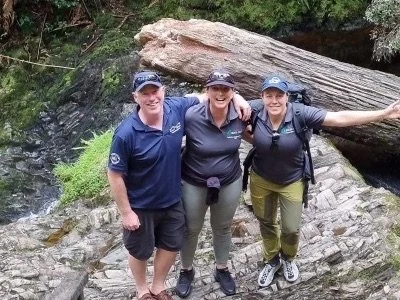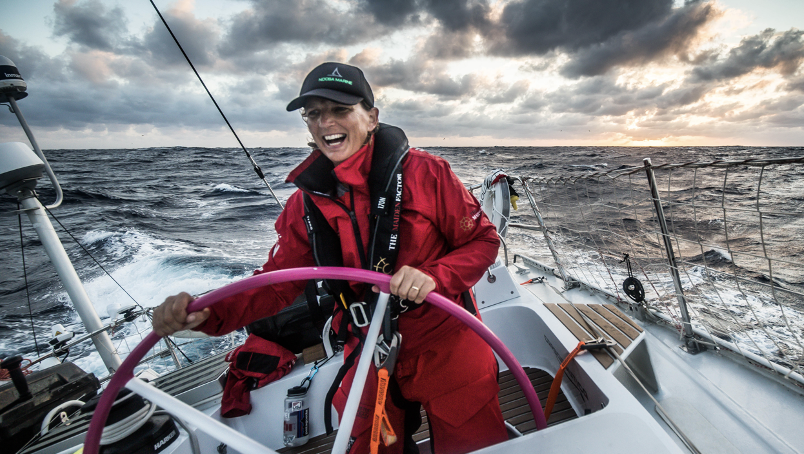How to join the crew for a sailing event
Step 1: Booking your expedition
Let's start at the beginning. You've explored our website, done your research and decided you want to join us on a sailing expedition. How exciting!
Booking an expedition can be a big financial commitment, so we offer two options; a 50% deposit with the balance 60 days before departure or you can secure your spot with a 20% deposit, and pay the rest off in weekly instalments.
After you've locked in your expedition, you'll receive confirmation of your full crew package, which includes:
Accommodation onboard the yacht
All meals onboard and ashore at any stopovers
All activities e.g kayaking, snorkelling, fishing etc.
Crew meals on the night prior to departure and the night of arrival
Your Ocean Sailing Expeditions crew shirt
Marina fees
The use of a PFD (personal floatation device), PLB (personal locator beacon) and safety tether
Bedding, a pillow, a towel and as much suncream as you need
This brings us to the next question: what do I need to prepare before we set sail?
Flights and transport to and from the departure and arrival ports
Accomodation ashore before or after event dates
Clothing, wet weather gear and toiletries (Download the gear list)
Any alcohol you want to drink in port or at anchor.
The crew learning how to navigate a 72-foot yacht on an ocean passage.
Step 2: Learning to sail a 72-footer
Referring to you as a crew member goes beyond maritime naming traditions. Our sailing expeditions are hands-on for all crew members, meaning actually learn to sail the yacht, work as a team and navigate each challenge at sea.
On selected multi-day ocean events, all crew members need to complete either a 5-hour online or 2-day classroom based Sea Safety and Survival Training Course. It is not required on most of the coastal and cruising events. This is followed by safety training and familiarisation onboard the yacht on the day you arrive onboard and before we set sail.
The rest of the training is provided onboard by our team of highly experienced skippers. Here is a snippet of what you will experience onboard:
Planning our arrival and route from and to safe harbour including timing with daylight (if required), weather factors, navigational hazards, communications/customs and sail/motor arrival plan.
Hoisting, trimming and reefing both upwind (main, genoas, and jibs) and downwind sails (poled out headsails, spinnakers and gennakers (subject to weather).
Acting as watch captain and crew (day and night), helming, navigating, checking weather and monitoring AIS and radar and for both traffic and rain squalls.
Navigating, hazard identification, entering waypoints and calculating updated ETA’s.
Routine checks of bilges, engine, electrical systems, sails and hardware for preventative maintenance.
Watch roster planning - matching responsibility to experience, crew management and communication.
Our sailing expeditions are suitable for sailors of all experience levels and we will always cater to each crew member individually, to keep the learning curve steep and exciting.
The Ocean Sailing Expeditions team is always ready and excited to teach you the ropes.
Sharon helming the yacht Maidan
Step 3: enjoy the expedition of a lifetime
Once you've completed the pre-sail preparation, it's time to roll up your sleeves and get ready to enjoy the expedition of a lifetime.
A positive, open mindset is key to making the most of your experience. When challenges arise, it's about combining our strengths and enjoying the process of problem solving. It's all about the adventure.
Now, I remembered that in my email to you a little while ago I mentioned that one of the most frequently asked questions I get is ''What if I get seasick'', and I believe I still owe you an answer.
I've recently asked our sailing community that have joined us on previous expeditions, what their key tips and tricks are to avoid / overcome seasickness. I've listed a selection below:
Seasickness tablets (Scopa derm, Ondansetron, Phenergen, Quells, TravaCalm, Paihia Bombs or ginger tablets).
Avoiding caffeine, fatty foods, alcohol, dehydration and sleep depravation.
Sleep.
Keeping your eyes on the horizon and helming the boat.
Standing on one leg, with your finger in the opposite ear.
Now these answers do come with a disclaimer that I can't guarantee all of these will work (especially the last one)...
What I can confirm is that any initial seasickness is usually always overcome in the first 1-2 days as the body settles into the rhythm. Fear of sickness shouldn't hold you back from fulfilling your dreams!



